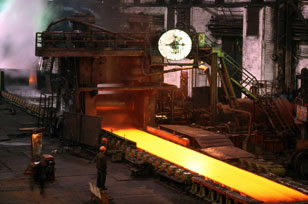Overview of the steel industry

The European steel industry is competitive, well established in a majority of Member States and an important employer. It produces steel in an energy intensive process by reducing iron ore, or by melting recycled scrap. Hundreds varieties of steel products are used in a very wide range of applications by industries like mechanical, shipbuilding, automotive, appliances and packaging, construction and transport. Steel is recovered from end of life goods and recycled without loss of its intrinsic properties, which adds to its competitiveness and environmental benefits.
Turnover in the EU steel sector is approximately €150 billion. The sector employs 410 000 people, representing 1.25% of the total employment in EU manufacturing. With a production of around 200 million tonnes of crude steel in 2008, the EU represents 16% of world output and is the second biggest producer behind China.
Today, the EU steel sector is a modern industry with its main customer base found within the EU home markets, particularly in high-end segments. The main competitive strength is based on high quality products, product innovation and technological development, efficiency, and skilled manpower.
The main challenges for the EU steel industry are linked to obligation to reduce emissions, to the cost and availability of inputs (raw materials, energy), competition from third country producers, and the need of attracting and keeping a skilled workforce.








 [170 KB]
[170 KB] 




